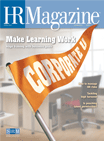 For decades, HR professionals have assumed that employee performance can be tracked using the bell curve model with equal numbers of people falling on either side of the mean.
For decades, HR professionals have assumed that employee performance can be tracked using the bell curve model with equal numbers of people falling on either side of the mean.
In many companies, performance management systems require supervisors to rate the performance of their employees according to that shape, or distribution. Managers are trained not to let anyone's rating fall too far from the rest of the group.
However, a recent study has found a crack in that theory. The results could have a dramatic impact on almost every HR function, from pre-employment testing to performance evaluations and leadership development.
In a study of more than 600,000 individuals, researchers found that individual performance doesn't unfold on a bell curve, or "normal distribution," at all. Instead, they discovered a "power-law" distribution, with a few elite performers contributing the most to the productivity of their organizations.
"We were actually surprised ourselves," says Herman Aguinis, professor of organizational behavior and human resources at Indiana University's Kelley School of Business.
To be certain, he and co-author Ernest O'Boyle, an assistant management professor at Longwood University, conducted separate studies applying normal and power-law distributions to assess performers in four fields:
- Professors in 50 disciplines, based on how frequently they published in discipline-specific journals.
- Entertainers, based on the number of awards or nominations they received.
- Politicians in 10 nations, based on their re-election results.
- Collegiate and professional athletes, based on individual scores and total wins in individual sports.
They found the same results over and over again. "How organizations hire, maintain and assess their workforces has been built on the idea of normality in performance, which we now know is, in many cases, a complete myth," Aguinis says.
If a small group is responsible for most of a company's output, as the study suggests, it's critical to identify those superstars early and manage, train and compensate them differently from colleagues. "This will require a fundamental shift in mind-set and entirely new management tools," he says.
However, changing HR practices will be challenging because of the ethical questions raised, he says. For example, the research implies that companies should invest more resources in elite performers, which runs counter to entrenched notions of fairness and equality. If they do so, what happens to the organizations' overall productivity?
A follow-up study is under way to determine the best way to manage the superstars. "I see this as a beginning of a new string of research that will lead to changed practices in the field of HR," says Aguinis, whose study was published in the spring issue of Personnel Psychology.
Do Workers with Disabilities Cost More? Employers in the U.S. hospitality industry are often reluctant to hire people with disabilities because of preconceived notions that they cannot do the jobs and are more costly to employ than people without disabilities, according to University of New Hampshire researchers. In a survey of 320 U.S. hospitality companies, employers also cited the following concerns about hiring people with disabilities: the cost of workers' compensation; co-worker attitudes, discomfort and unfamiliarity; and lack of knowledge of the effectiveness of people with disabilities. The unemployment rate for people with disabilities was 12.9 percent in January, compared with 8.7 percent for people without disabilities, U.S. Labor Department figures show. Tax credits to offset accommodation costs may encourage companies to employ more people with disabilities, says Andrew Houtenville, associate professor of economics and research director of the university's Institute of Disability. Disability awareness training can help correct misconceptions, suggest Houtenville and co-author Valentinin Kalagyrou, assistant professor of hospitality management. Earlier research shows that 71 percent of accommodations cost $500 or less, and 20 percent of those cost nothing, they note. Key to changing attitudes is getting top leaders on board, Houtenville says. "They're setting the vision for the company, and if that vision's not there, it's not necessarily going to happen," he explains. The study was published in the February issue of Cornell Hospitality Quarterly. |
Advertisement
An organization run by AI is not a futuristic concept. Such technology is already a part of many workplaces and will continue to shape the labor market and HR. Here's how employers and employees can successfully manage generative AI and other AI-powered systems.
Advertisement


